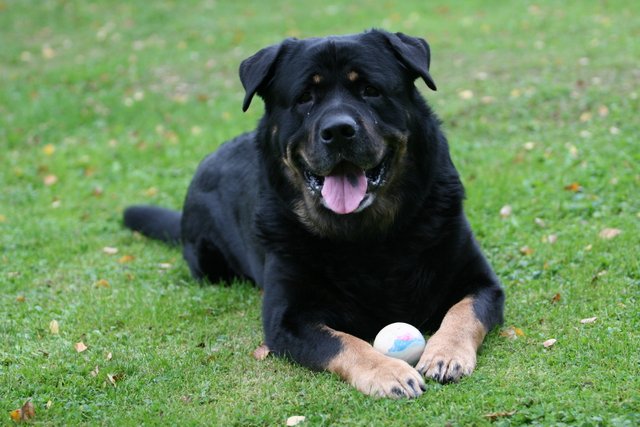what is General History Of Dogs?
There is no disjointedness in the possibility that in the extremely earliest time of man's home of this world he made a companion and friend of a native delegate of our cutting edge canine of some kind or another, and that as a trade-off for its guide in safeguarding him from more out of control creatures, and in watching his sheep and goats, he provided it with a portion of his food, a corner in his residence, and developed to trust it and care for it. Most likely the creature was initially little else than an abnormally delicate jackal, or a feeble wolf driven by its colleagues from the wild pillaging pack to look for cover in outsider environmental elements. One can well imagine the chance of the association starting in the situation of a few powerless whelps being brought back by the early trackers to be tended and raised by the ladies and youngsters. Canines brought into the home as toys for the youngsters would develop to respect themselves, and be respected, as individuals from the family
In essentially all regions of the planet hints of a native canine family are found, the main special cases being the West Indian Islands, Madagascar, the eastern islands of the Malayan Archipelago, New Zealand, and the Polynesian Islands, where there is no sign that any canine, wolf, or fox has existed as a genuine native creature. In the old Oriental terrains, and by and large among the early Mongolians, the canine stayed savage and disregarded for a really long time, lurking in packs, emaciated and wolf-like, as it slinks today through the roads and under the walls of each and every Eastern city. No endeavor was made to appeal it into human friendship or to further develop it into meekness. It isn't until we come to inspect the records of the greater civilisations of Assyria and Egypt that we find any unmistakable assortments of canine structure.
The canine was not incredibly valuable in that frame of mind, in both the Old and New Confirmations it is generally discussed with hatred and scorn as an "messy monster." Even the natural reference to the Sheepdog in the Book of Work "However presently they that are more youthful than I have me in criticism, whose fathers I would have despised to set with the canines of my herd" isn't without an idea of disdain, and it is huge that the main scriptural suggestion to the canine as a perceived buddy of man happens in the spurious Book of Tobit.
The extraordinary huge number of various types of the canine and the tremendous contrasts in their size, focuses, and outward presentation are realities which make it hard to accept that they might have had a typical lineage. One thinks about the distinction between the Mastiff and the Japanese Spaniel, the Deerhound and the trendy Pomeranian, the St. Bernard and the Smaller than expected Dark and Tan Terrier, and is bewildered in pondering the chance of their having dropped from a typical forebear. However the difference is no more prominent than that between the Shire horse and the Shetland horse, the Shorthorn and the Kerry steers, or the Patagonian and the Dwarf; and all canine reproducers know that creating an assortment in type and size by concentrated on selection is so natural.
All together appropriately to comprehend this question considering the character of construction in the wolf and the dog is important first. This character of construction might best be concentrated on in an examination of the rigid situation, or skeletons, of the two creatures, which so intently look like each other that their rendering wouldn't effortlessly be identified.
The spine of the canine comprises of seven vertebrae in the neck, thirteen toward the back, seven in the flanks, three sacral vertebrae, and twenty to 22 in the tail. In both the canine and the wolf there are thirteen sets of ribs, nine valid and four misleading. Each has 42 teeth. The two of them have five front and four rear toes, while ostensibly the normal wolf has such a lot of the presence of an enormous, exposed boned canine, that a well known portrayal of the one would serve for the other.
Nor are their propensities unique. The wolf's normal voice is a noisy yell, however when bound with canines he will figure out how to bark. In spite of the fact that he is rapacious, he will likewise eat vegetables, and when debilitated he will snack grass. In the pursuit, a bunch of wolves will separate into parties, one following the path of the quarry, the other trying to capture its retreat, practicing a lot of technique, a quality which is shown by a lot of people of our wearing canines and terriers while hunting in groups.
A further significant place of likeness between the Canis lupus and the Canis familiaris lies in the way that the time of development in the two species is 63 days. There are from three to nine fledglings in a wolf's litter, and these are visually impaired for 21 days. They are nursed for quite some time, however toward the finish of that time they can eat half-processed tissue ejected for them by their dam or even their sire.
The local canines of all areas surmised intently in size, shading, structure, and propensity to the local wolf of those districts. Of this most significant situation there are unreasonably many examples to permit of its being viewed as a simple fortuitous event. Sir John Richardson, writing in 1829, saw that "the likeness between the North American wolves and the homegrown canine of the Indians is perfect to such an extent that the size and strength of the wolf is by all accounts the main distinction.
